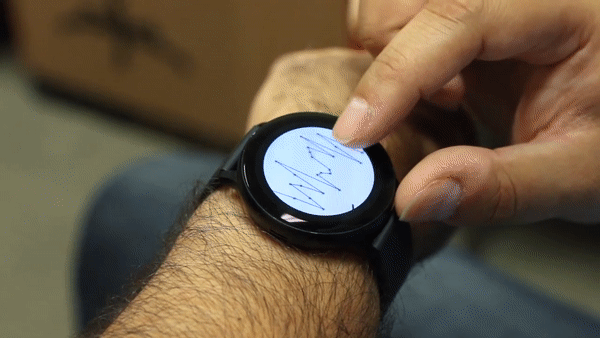BezelGlide: Interacting with Graphs on Smartwatches with Minimal Screen Occlusion
Ali Neshati, Bradley Rey , Ahmed Shariff Mohommed Faleel, Sandra Bardot, Celine Latulipe, Pourang Irani
Published in CHI, 2021
Abstract
We present BezelGlide, a novel suite of bezel interaction techniques, designed to minimize screen occlusion and ‘fat finger’ effects, when interacting with common graphs on smartwatches. To explore the design of BezelGlide, we conducted two user studies. First, we quantified the amount of screen occlusion experienced when interacting with the smartwatch bezel. Next, we designed two techniques that involve gliding the finger along the smartwatch bezel for graph interaction. Full BezelGlide (FBG) and Partial BezelGlide (PBG), use the full or a portion of the bezel, respectively, to reduce screen occlusion while scanning a line chart for data. In the common value detection task, we find that PBG outperforms FBG and Shift, a touchscreen occlusion-free technique, both quantitatively and subjectively, also while mobile. We finally illustrate the generzability potential of PBG to interact with common graph types making it a valuable interaction technique for smartwatch users.
In Summary
We explore the use of the bezel for line chart interaction on smartwatches while reducing screen occlusion. Using the bezel has many benefits, such as allowing interaction away from the main screen conten and the affordance of natural touch interactions without contradicting other common gestures. An example of our novel interaction technique, Partial BezelGlide, can be seen below.

Key Findings
- Screen occlusion heat map of general touch interaction across a smartwatch screen is reported
- Partial BezelGlide, using the portion of the bezel that allows for minimal screen occlusion, outperformed Shift and a control Full BezelGlide techinque both quantitatively and subjectively in a common value detection task
In More Detail
Please review our full paper (linked above) for study details, methodologies, and complete results.
